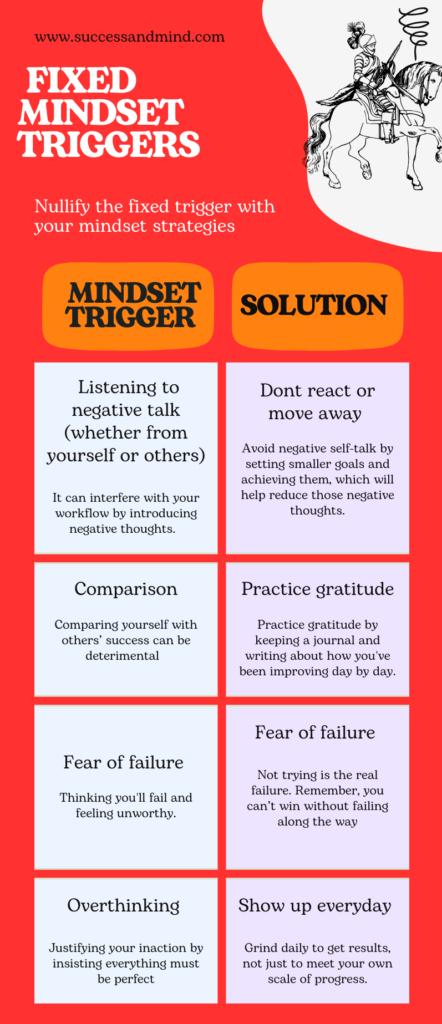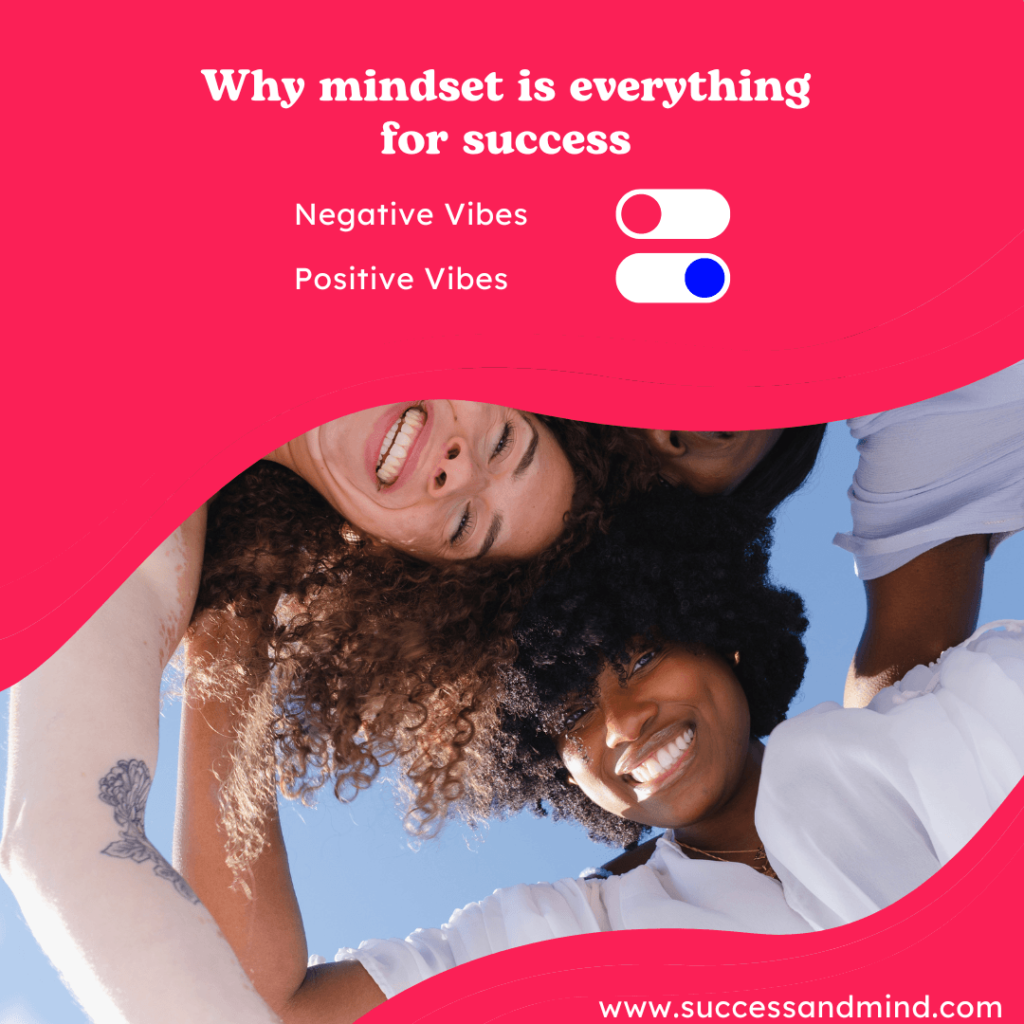A master guide with 8 effective steps for growth mindset development
We’ve all been there—endless bills, an empty pocket, the 99th failed date, and worsening health. It feels like trying to fly with wet wings. But do you know about a group of people who work against all odds? People with a growth mindset. They keep ideating, learning, and experimenting, even in tough times.
If you are reading this, you admit that you encounter a fixed mindset. Pat yourself on the back—admitting this is the first step in your mindset shift.
Looking for the exact steps to change? Don’t worry, we’ve got you. Read on or skip ahead to the 8 steps.
Growth vs. Fixed Mindset: The Inner War
Carol Dweck, a renowned psychologist, says that only 40% of people have a growth mindset, meaning the other 60% have a fixed mindset. The harsh truth is that 60% of people struggle to succeed.
We often wage an inner war when starting tasks. Your gut says, “I can,” while your fixed mindset says, “I can’t.” You feel insecure about yourself and avoid taking risks. To set yourself free, change your inner thoughts from “I can’t” to “I can.” Use positive affirmations like, “I can achieve results, learn from them, and grow.”
The Importance of a Growth Mindset development
Here’s a quick two-line story about the growth mindset: A boy plants a mango seed and eagerly waits for it to sprout. But instead of being patient, he digs it up daily to check for progress. As a result, the seed does not grow at all.
You are the boy in the story, and the seed represents our growth.
Doubt disrupts our progress. We constantly monitor our growth, seeking perfection, but this does more harm than good. You lose progress along the journey. So, stop being an overthinker and start being an action-taker.
A growth mindset positively affects your income, relationships, mental state, and professional development. From kids to adults, everyone needs to switch to a growth mindset.
8 Steps to Develop Your Growth Mindset
1. Avoiding Mindset Trigger
You may have a fixed mindset, but there’s no need to cry and curse the stars for it. Instead, identify your daily triggers. Mindset triggers are the culprits that shift you from a growth mindset to a fixed one. Below are some common triggers and their solutions.

2. Gift of Growth Mindset – Perseverance and Resilience
Remember the movie The Pursuit of Happyness? Chris Gardner, played by Will Smith, gets into trouble with his job, relationship, and finances. But he still chooses to work hard and commit to an unpaid internship. As a result, he achieves success.
What does this teach you? Perseverance and resilience.
Stay calm and focused, everyone. Rise and push yourself to achieve. Don’t give any excuses.
- You don’t feel like working? Work.
- You lost your relationship? Work.
- You lost money in stocks? Work.
- You faced a major setback? Work.
These may sound simple, but victory comes to those who overcome the resistance to work. Many of us get stuck in a plateau, where results aren’t immediately visible. Common people quit, but with perseverance, you’ll push through and see steep growth beyond the plateau.
3. Getting Feedback and Working on It
Every great product or service encourages users to leave feedback because it offers insight into strengths and areas for improvement. Even big companies seek feedback—they don’t stop just because they’re successful. That’s a growth mindset at work.
Feedback is a goldmine for learning. It helps you refine yourself and build a better version of who you are. Feedback tests your confidence and personal traits. However, if you take it positively, it changes you altogether. After all, it is your personalized data to work on. So, the next time you get feedback, don’t get defensive. Look for what you can get from there.
Point to note: Always seek coaching, training, and mentorship, even though you are already great. It is necessary to stop being shy or wasting hours figuring things out by yourself. Be brave enough to face your feedback and learn from experts.
4. Creating a Positive Aura with Growth-Oriented People
Do you know that your personal traits are determined by your inner circle? Your circle consists of the people you spend most of your time with. If they are average, you are average. If they are progressive, you are also progressive.
Reflect on this for a minute and see how true it is.
Your mindset is shaped by your environment. When you surround yourself with people who have a growth mindset, you stay in a growth-oriented headspace.
Always partner with people who care about improving their lives rather than just partying. If you don’t have such people around you, find an accountability partner or growth-focused communities online or at networking events.
5. Engage in Continuous Learning and Skill Development
Do you think learning ends when you get a degree? No! Learning is a lifelong process, and it’s a key sign of a growth mindset. Keep an open mind when life teaches you lessons.
If you stop learning, your brain becomes stagnant. But you don’t need to go back to university or take expensive courses. You can read books, listen to podcasts, or watch educational videos related to your niche. At the end of the day, you will be surprised by your transformation.
6. Productivity vs. Busyness
Do you think hard work brings success? Not always. If it did, many of us would have been the wealthiest people. We often show ourselves as busy, but being productive is different from being busy.
Busyness indicates you are concentrating on needless things.
To identify needless tasks, try this exercise: Track every hour of your day for a week. Record everything like 10:00 a.m. to 11:00 a.m. – exercising, 11:00 a.m. to 12:00 p.m. – reading.
By doing this, you will identify what is your needless task. Identify it and eliminate it.
Here are simple time management golden rules:

Point to note: To boost productivity, use apps like Trello or project management tools like Slack or ClickUp. Even a simple diary or sticky notes on your desk can help.
7. Avoiding Burnout
You don’t need to live in extremes—either working 13 hours straight or doing nothing. Overworking leads to burnout, and doing nothing causes anxiety.
To avoid burnout, make sure to schedule “me” time. This is when you do something that makes you happy—a hobby, going out, or enjoying a good meal.
Research by Vizayieno Casavi shows that sleep is important for mental, physical, and emotional well-being. Rest rewires your brain, consolidates learning, prevents diseases, and improves social connections.
8. Work for Purpose
If you’re struggling to adopt a growth mindset, there might be something wrong with your goal. Is money, power, or fame your end goal? There’s nothing wrong with that, but people care about solutions to their problems, not your personal gain. So, it is best to chase the solution to offer your customers or audience rather than working in the void.
Even in your personal life, purpose matters. Long-term relationships and social connections need to revolve around a purpose.
So, find a purpose in your career, personal, and social life. Do something to achieve that purpose every day instead of chasing money.
Conclusion
Developing a growth mindset is a hard thing to do. But with patience and hard work, it is possible.
Mindset is everything for your success and happiness in life.
A growth mindset is a learning mindset, even in the midst of troubles. It sets you apart in the crowd.
To eliminate the inclination toward a fixed mindset, always try to learn and grow.
Focus on the above 8 steps to develop a positive mindset. The first step toward a growth mindset is to avoid mindset triggers and face challenges to solve them rather than complaining. Also, it is important to practice perseverance and resilience while grinding. If you want extra support, look for mentorship or growth-oriented people, or seek feedback to improve yourself in less time.
Most importantly, don’t stop learning every day. Develop the needed skills in your niche. Also, be productive throughout the day by learning time-management skills. But don’t experience burnout while being productive.
Finally, if you have a purpose, shifting from a fixed to a growth mindset is easy.

